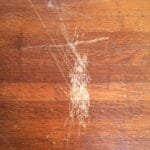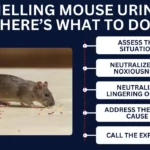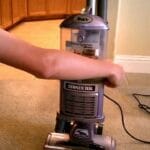Has your Kenmore 80 Series washer left you stranded with soaking wet clothes, refusing to spin? You’re not alone, and it’s frustrating when your dependable laundry appliance suddenly stops working as it should.
Imagine the relief of discovering a simple solution that gets your washer back in action, saving you time and stress. You’ll uncover the reasons behind your washer’s stubbornness and learn straightforward steps to fix it. By the end, you’ll be equipped with the knowledge to tackle the problem head-on, ensuring your laundry days are smooth and trouble-free.
Ready to dive in and solve the mystery behind your washer’s spinning woes? Let’s get started!

Credit: www.tiktok.com
Common Causes Of Spin Issues
Experiencing spin issues with your Kenmore 80 Series Washer? Understanding common causes can help. Spin problems often stem from mechanical faults. Let’s explore these potential issues.
Lid Switch Problems
The lid switch ensures the washer spins with the lid closed. A faulty switch stops the spin cycle. Check if the switch clicks when closing the lid. No click means it might be broken. Replace it to restore functionality.
Drive Belt Wear And Tear
The drive belt connects the motor to the drum. Over time, belts can wear out or break. A worn belt leads to spin failure. Inspect the belt for damage. Replace it if it’s frayed or broken.
Motor Coupling Malfunctions
The motor coupling links the motor to the transmission. It’s a small, plastic and rubber part. It can break due to overload or age. When broken, the washer won’t spin. Check for any visible breaks. Replace the coupling if needed.
Faulty Clutch Assembly
The clutch assembly helps the tub reach proper spinning speed. A worn clutch can cause slow or no spinning. Listen for unusual noises during the spin cycle. If the clutch is faulty, replace it for better performance.
Diagnosing Lid Switch Failures
Experiencing spin cycle issues with your Kenmore 80 Series washer? A faulty lid switch might be the culprit. Diagnosing lid switch failures involves checking for broken connections or misalignment, ensuring the washer spins efficiently.
Diagnosing Lid Switch Failures When your Kenmore 80 Series washer refuses to spin, frustration can quickly take over. One common culprit behind this issue is a faulty lid switch. This tiny component plays a crucial role in ensuring your washer functions smoothly. By understanding how to diagnose lid switch failures, you can save time, money, and perhaps even a call to the repair technician. Have you ever wondered how such a small part can impact your laundry day so significantly?Testing The Lid Switch
Before diving into repairs, testing the lid switch is a smart first step. To get started, ensure that your washer is unplugged for safety. Open the washer lid and locate the switch, typically found near the door hinge. You might be thinking, “How do I check if it’s working?” Simply press and release the switch. Listen for a clicking sound. If you hear it, chances are the switch is functioning. However, silence indicates a potential problem. For a more detailed test, use a multimeter to check for continuity. Set the multimeter to the lowest resistance setting and touch the probes to the switch’s terminals. A reading of zero or close to zero indicates a working switch. A higher reading suggests it’s time for a replacement.Replacing A Defective Lid Switch
If testing reveals a defective lid switch, replacing it is straightforward. First, gather necessary tools: a screwdriver, a putty knife, and the replacement switch. Remember to purchase the correct switch model for your Kenmore 80 Series. Begin by unplugging the washer. Use the putty knife to release the clips holding the top panel. Lift the panel to access the lid switch. Unscrew the old switch and disconnect the wires. This process might seem daunting, but you’ll appreciate the sense of accomplishment once it’s done. Attach the new switch by connecting the wires and securing it with screws. Lower the top panel back into place. Finally, plug in the washer and test the spin cycle. You might just find that your trusty Kenmore is back in action, ready to tackle those laundry piles. Have you tackled a lid switch replacement before? You might be surprised at how empowering a successful DIY repair can feel. By taking charge of the situation, you’ve not only fixed your washer but also gained valuable knowledge for future troubleshooting.Assessing Drive Belt Condition
The drive belt in your Kenmore 80 Series Washer plays a crucial role. It connects the motor to the drum, enabling it to spin. A damaged or loose belt can halt spinning altogether. Regular assessment ensures your washer performs optimally. Identifying belt issues early prevents costly repairs and extends washer life.
Checking Belt Tension
Start by unplugging the washer for safety. Locate the drive belt near the motor. Check the belt tension by pressing it with your finger. It should feel firm, but not overly tight. A loose belt may slip, causing spin issues. If it’s too tight, it might strain the motor.
A properly tensioned belt maintains drum rotation. Adjust belt tension if it’s not correct. Use a wrench to loosen the motor bolts slightly. Shift the motor for proper tension. Tighten the bolts afterward. This ensures the belt stays in place during operation.
Replacing A Worn Drive Belt
A worn belt can hinder spinning. Look for signs like fraying or cracks. Replace the belt if you notice wear. Purchase a compatible drive belt for your model. Ensure it’s the correct size and type.
Begin by removing the old belt. Loosen motor bolts and slide the belt off. Clean the area to remove debris. Position the new belt on the motor pulley and drum. Ensure it’s aligned correctly. Tighten the motor bolts to secure the belt. Test the washer to confirm proper spinning.

Credit: www.youtube.com
Inspecting Motor Coupling
Experiencing issues with your Kenmore 80 Series washer not spinning? Inspecting the motor coupling could reveal the problem. This small part connects the motor to the washer drum, and a worn or broken coupling might cause spinning failures.
Inspecting the motor coupling in your Kenmore 80 Series Washer can save time and money. This small but crucial component connects the motor to the washer’s transmission. A malfunction in the motor coupling often prevents the washer from spinning. Identifying and addressing this issue can restore your washer’s functionality.Symptoms Of A Broken Motor Coupling
A broken motor coupling causes noticeable symptoms. The washer may fill with water but not spin. You might hear a humming sound while the washer tries to spin. Sometimes, a burning smell emerges from the washer. These signs point to a faulty motor coupling.Steps To Replace Motor Coupling
Begin by unplugging the washer to ensure safety. Next, remove the washer’s control panel. Use a screwdriver to detach it. Tilt the cabinet forward and set it aside. Locate the motor coupling between the motor and transmission. Remove the broken coupling. Attach the new motor coupling in its place. Reassemble the washer’s cabinet and control panel. Finally, plug in the washer and test its spin function.Evaluating Clutch Assembly
Is your Kenmore 80 Series washer refusing to spin? It might be time to evaluate the clutch assembly. This component is crucial for the smooth operation of your washer, linking the transmission and the tub. When the clutch assembly falters, your laundry routine can come to a screeching halt. Understanding how this part works and knowing the signs of trouble can save you from unnecessary headaches and expenses.
Signs Of Clutch Assembly Issues
You might notice your washer is struggling to spin or is not spinning at all. Does it seem like the tub is trying to move but just can’t muster the energy? This might be a clutch problem. Pay attention to strange noises during the spin cycle. Grinding or screeching sounds often indicate the clutch is worn or damaged.
Another clue is how your clothes come out of the wash. Are they wetter than usual? This could mean the clutch isn’t allowing the tub to spin fast enough to wring out excess water. A malfunctioning clutch can also lead to longer wash times. Have you noticed that your washer seems to be working harder, yet accomplishing less?
Repairing Or Replacing Clutch Assembly
If you suspect clutch assembly issues, the next step is deciding whether to repair or replace it. First, consider inspecting the clutch yourself. You might find it covered in dirt or lint, which can affect its performance. Cleaning it might solve the problem temporarily.
For a more permanent solution, replacing the clutch assembly could be the answer. You might feel daunted by the idea, but many homeowners have tackled this task with success. Would you rather spend a bit more time and effort now to avoid frequent breakdowns in the future?
Before diving into repairs, check online tutorials or videos for guidance. Many have shared their experiences, offering detailed steps that can make the process easier. Consider the costs too. Sometimes, hiring a professional is the most efficient and cost-effective option.
Evaluating your washer’s clutch assembly can be a game-changer in resolving your spinning woes. Have you ever fixed an appliance and felt that sense of accomplishment? Tackling this issue could be just the challenge you need.
Additional Troubleshooting Tips
Stuck with a Kenmore 80 Series washer that won’t spin? Don’t worry. There are several steps to identify the problem. Follow these additional troubleshooting tips. These steps may help you fix the issue.
Checking For Obstructions
First, check for any obstructions. Items may block the washer drum. Look for clothes or small objects stuck. Remove any obstructions you find. This can help the washer spin properly.
Verifying Electrical Connections
Next, examine the electrical connections. Make sure the washer is plugged in. Check the outlet for power. Ensure the power cord is intact. A loose connection may cause spinning issues.
Examining Control Board Functionality
Finally, inspect the control board. It acts like the brain of your washer. If damaged, it may prevent spinning. Look for burnt marks or loose wires. A faulty board may need replacement.
Preventive Maintenance
Preventive maintenance keeps your Kenmore 80 Series washer spinning smoothly. Regularly check the belts and motor for wear. Clean the drain pump and hoses to avoid blockages that hinder performance.
Preventive maintenance is the key to keeping your Kenmore 80 Series Washer running smoothly and avoiding the dreaded spin issues. Imagine the frustration when your washer refuses to spin, leaving clothes dripping wet. Regular maintenance can help you avoid such scenarios. By spending a little time and effort, you can extend the life of your washer and ensure it runs efficiently.Regular Cleaning And Inspection
Regular cleaning and inspection of your washer can prevent many common problems. Start by cleaning the drum and detergent dispenser to remove soap residue and dirt build-up. This simple task can prevent clogs and ensure your washer spins properly. Check the hoses for any signs of wear or leaks. A small leak might seem harmless, but it can lead to bigger problems if not addressed. Tighten loose connections and replace damaged hoses promptly. Don’t forget to inspect the washer’s balance. An unbalanced washer can lead to spin issues and even damage the machine. Adjust the feet to ensure the washer is level and stable. This will help it spin efficiently and prevent unnecessary wear and tear.Tips For Prolonging Washer Life
Treat your washer with care to prolong its life. Avoid overloading it, as this can strain the motor and lead to spin problems. Follow the recommended load size for your model to keep it running smoothly. Use the right detergent and the correct amount. Excessive soap can leave residue, affecting the machine’s performance. Stick to high-efficiency detergents designed for your washer. Consider running a maintenance cycle every few months. Many washers have a self-cleaning cycle that helps remove build-up and keeps the machine fresh. If your washer doesn’t have this feature, a hot water cycle with a cup of vinegar can work wonders. Have you ever thought about the impact of skipping these simple steps? Neglecting preventive maintenance can lead to costly repairs or even the need for a new washer. Taking small, consistent actions can save you time and money in the long run. Your Kenmore 80 Series Washer will thank you for it!
Credit: www.facebook.com
Frequently Asked Questions
Why Won’t My Kenmore 80 Series Washer Spin?
Check for unbalanced loads. Distribute clothes evenly. Inspect the lid switch and motor coupling for defects.
How Do I Reset My Kenmore Washer?
Unplug the washer for 30 seconds. Plug it back in. Open and close the lid six times.
Is A Faulty Lid Switch Common In Kenmore Washers?
Yes, it’s a frequent issue. A broken lid switch prevents the washer from spinning.
Can Clogged Drains Affect The Spinning Cycle?
Absolutely. Blocked drains can halt spinning. Check hoses and drain for blockages.
What Should I Do If The Motor Coupling Is Broken?
Replace it immediately. A broken motor coupling can stop the washer from spinning.
Conclusion
Fixing a Kenmore 80 Series washer can seem daunting. Remember, check the basics first. Power supply and proper loading are key. Troubleshooting can solve many spin issues. Replace or repair faulty parts if needed. Regular maintenance helps avoid future problems.
Keeping your washer in good condition saves time and money. Always follow the user manual for guidance. If problems persist, consult a professional. A well-functioning washer makes laundry day easier. Stay proactive and enjoy hassle-free washing experiences.





